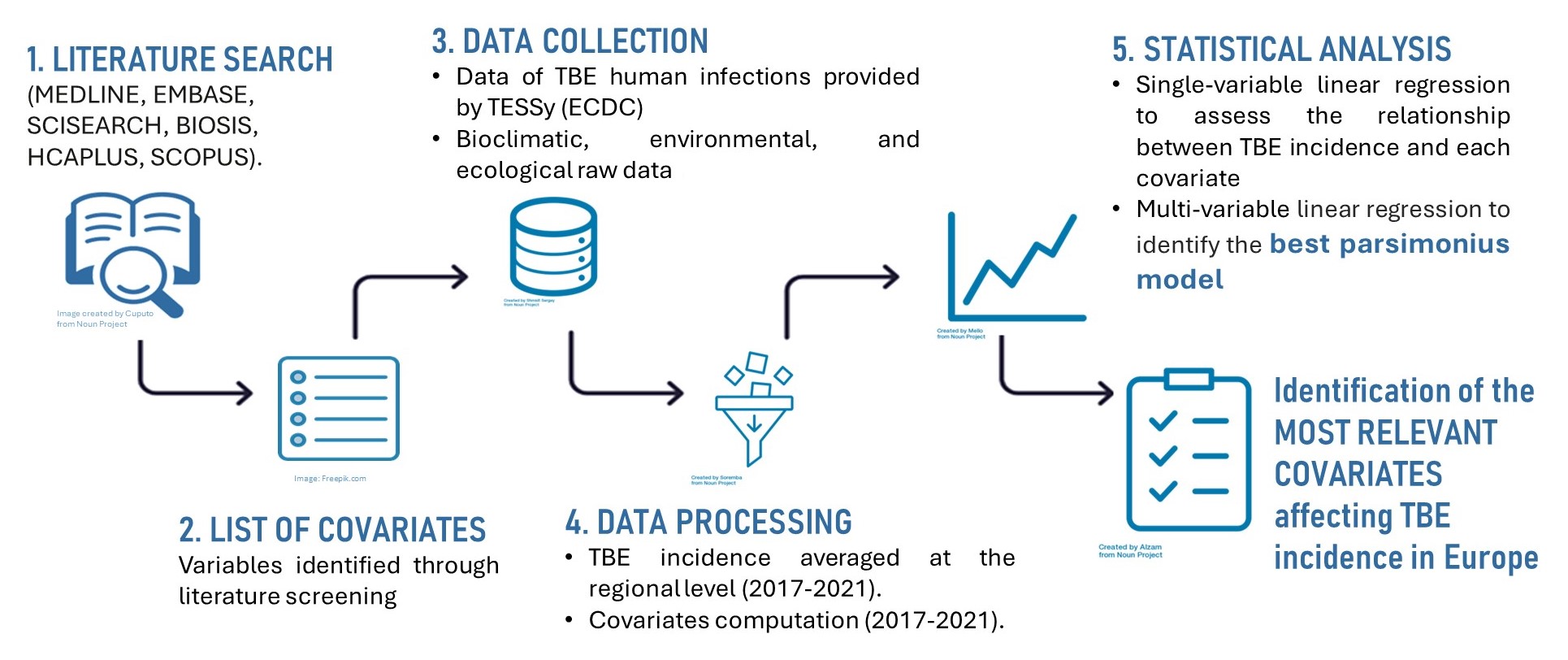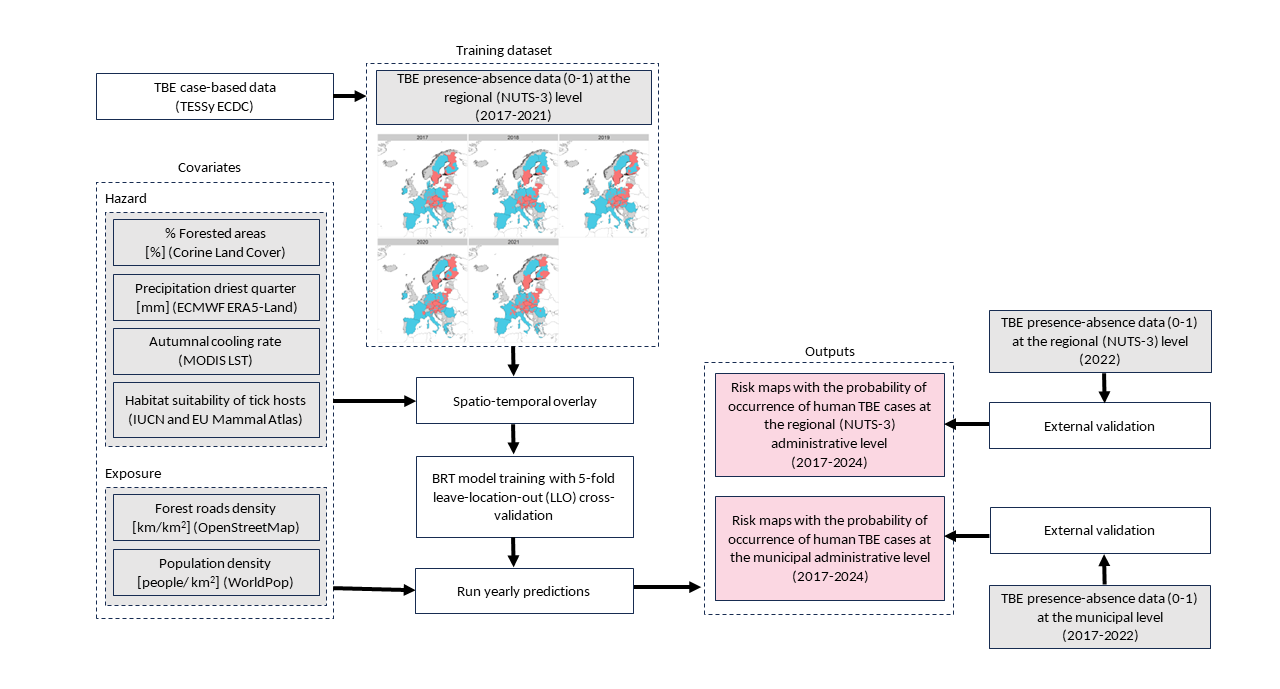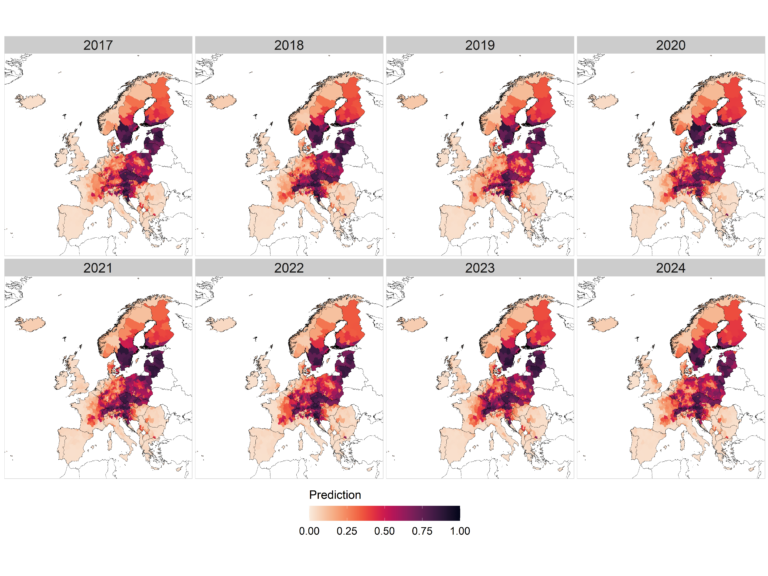Tick-borne encephalitis (TBE) as a model for endemic pathogens transmitted by endemic vectors
Disease description
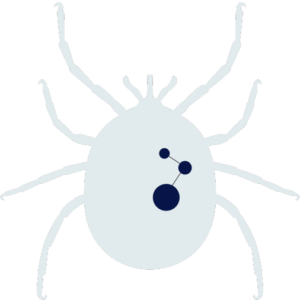
Tick-borne encephalitis (TBE) is a zoonotic disease which affects human and animal central nervous systems. Patients may experience flu-like symptoms in mild cases, while more severe cases can result in life-threatening complications. The virus is transmitted to humans through the bite of infected ticks or the consumption of unpasteurised milk and dairy products from infected animals. TBE has become a growing public health challenge in Europe and Asia. During the last decade, European incidence of TBE human cases increased from 2412 confirmed cases in 2012 to 3514 confirmed cases in 2022, with the appearance of new hotspots in non-endemic countries, and TBE has been identified as one of the biggest health threats arising from environmental change.
To enhance national and international preparedness and response to current and future spread of tick-borne encephalitis, MOOD has dedicated one case study to TBE.
Literature Review
It is difficult to identify TBE risk areas, as the circulation of the TBE virus depends on the interplay between numerous environmental and ecological conditions. Hence, a literature review was performed to summarize all the different aspects that enhance TBE spread and identify the main forces that affect the distribution of TBE human infections in Europe.
Disease profile
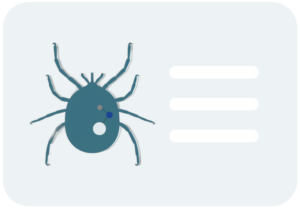
To reach a comprehensive understanding of the factors affecting the ecology, distribution, and trend in Europe of the infectious diseases included in MOOD, information from the available literature and expert input was collected and summarized in “disease profiles”. These documents synthesize the available knowledge on specific diseases, such as TBE (In Press).
TBE Covariates Dashboard
Fig 3: A snippet of the dashboard for the exploration of TBE covariates
This tool allows to explore metadata about environmental and ecological covariates adopted in literature, with respect to tick-borne encephalitis. The dashboard is based on the results of a literature review performed on articles published between 2000 and 2021, focusing on European countries.
Publications
- Ecological and environmental factors affecting the risk of tick-borne encephalitis in Europe, 2017 to 2021 (Dagostin et al., 2023, DOI 10.2807/1560-7917.ES.2023.28.42.2300121)
- Correlation between airborne pollen data and the risk of tick-borne encephalitis in northern Italy (Marini et al., 2023, DOI 10.1038/s41598-023-35478-w)
- High habitat richness reduces the risk of tick-borne encephalitis in Europe: A multi-scale study (Dagostin et al., 2024, DOI 10.1016/j.onehlt.2023.100669)
- Mapping and predicting annual changes in tick-borne encephalitis risk in Europe – Submitted
Risk maps
Based on the information collected from literature, and a set of covariates that reflect both hazard and exposure dimensions, a spatio-temporal model was developed to predict the probability of human TBE occurrence across Europe at the regional and municipal administrative levels. The risk maps developed in this study will be regularly updated and used to predict the expected changes in TBE risk one year in advance, allowing prevention and response efforts to be focused on high-risk areas. These results will be helpful to inform targeted public health interventions, including vaccination programmes and awareness campaigns in areas where TBE is emerging.
Case study leaders



Fondazione Edmund Mach, Research and Innovation Centre, Francesca Dagostin (francesca.dagostin@fmach.it)
Finish Institute of Health and Welfare, Timothée Dub
Fondazione Mach, Research and Innovation Centre, Annapaola Rizzoli (annapaola.rizzoli@fmach.it)


